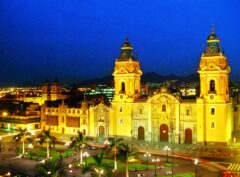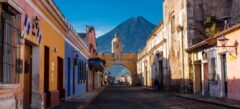A beginner’s guide to Latin America

Chris Moss shares his travel tips with the Telegraph
I lived through 10 Independence Day celebrations in Argentina and they never changed. There was a brief and polite military parade and some flag-waving, and instead of screams of passion – that’s reserved for football matches and for going to war with Britain – locals celebrated with a churro – a donut-like creation, oddly enough, from Spain.
Independencia is celebrated every year in Latin American countries, but this year the anniversary is more momentous, especially for the five countries that will be remembering not their declarations of independence but their gritos, or cries for freedom, from the shackles of Spain: Venezuela, Argentina, Colombia, Mexico and Chile. Two centuries ago this year all waged war with colonial forces and all, finally, succeeded in breaking up the confederation of viceroyalties and captaincies to become free nations after long and bloody battles.
As many travellers will know, the countries of the Latin America are related by language, culture, history and cuisine. There is greater homogeneity across Latin America than across any other continent. But there are also many differences, and 2010 is an opportunity to begin to explore the variety and colour of this vast, rich and beautiful part of the world. If you’re thinking of going for the first time, these brief tasters will help you decide where, when and how. If you have been before, perhaps it’s time to see a side of Latin America you have never really thought about. Paraguay, perhaps? Or Suriname? Buen viaje and felicitaciones, in the bicentennial year of so many great countries.
When to go
Summer in Central America stretches from December until about April. The rainy months are from May to October, with storms most likely in August and September.
South America is a year-round destination, with the austral spring and summer being the best time to visit cities such as Buenos Aires and Santiago. However, travel in Patagonia is more difficult from April until November, as temperatures fall and the chances of rain and snow increase exponentially. Conditions fluctuate widely according to altitude across Latin America.
Hotels fill up fast for the festivities at Easter, especially in Central America.
Flights
Iberia is the principal carrier for Spanish-speaking Latin America, with flights from London Heathrow to Madrid’s Barajas and then on to all the major cities.
British Airways flies direct to Mexico City and to Buenos Aires via São Paulo.
TAP flies to Lisbon, from where there are connections to many Brazilian cities on the coast as well as Manaus.
TAM flies from London to São Paulo.
Air Europa fly to Lima, Buenos Aires, Havana, Caracas, Salvador and Cancún via Madrid.
Mexicana flies Gatwick-Mexico City.
KLM, Air France and Lufthansa, fly to Latin America via their hubs in Amsterdam, Paris and Frankfurt.
LAN flies Madrid-Santiago non-stop.
It is expensive to travel close to Christmas and in the peak summer holiday period. Journey Latin America has a dedicated flights department and their expert consultants can advise you on prices and routings.
Costa Rica: a beginner's guide
El Salvador: a beginner's guide
The Guianas: a beginner's guide
By Chris Moss, Guardian Journalist.
Tailor-made holidays
Flexible, custom-made holidays to Latin America created to match your exact requirements: our tailor-made itineraries are as unique as the clients for whom they are designed.
Design my tripPapagaio
Your edit for Latin American inspiration
Our exciting range of articles on Latin America explore everything from iconic destinations and lesser-known cultural gems to delicious traditional recipes. You’ll also find exclusive travel tips, first-hand client reviews and the chance to get your personal questions answered by our travel experts.
View Extraordinary Inspiration






































